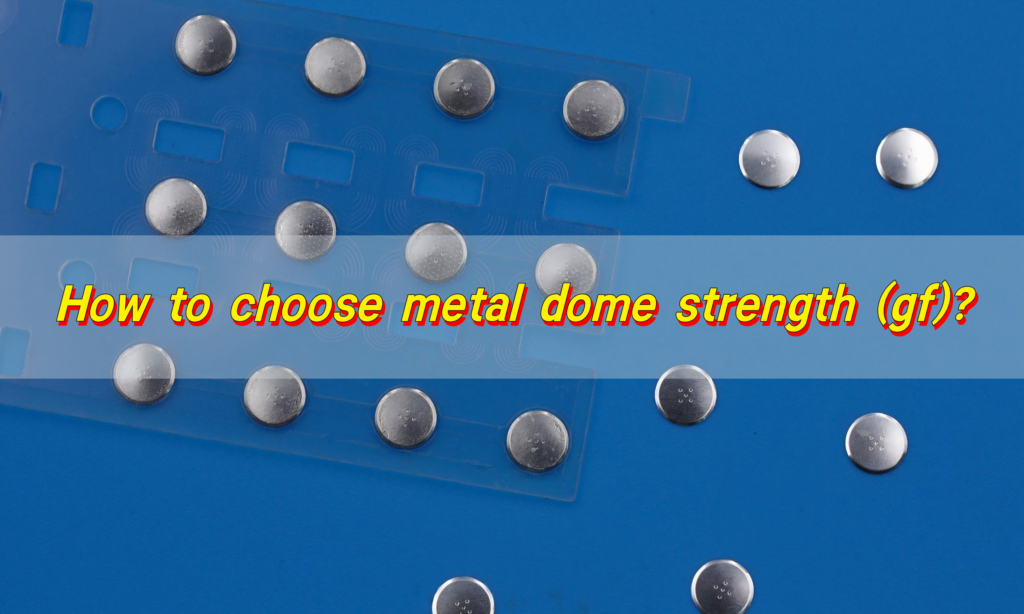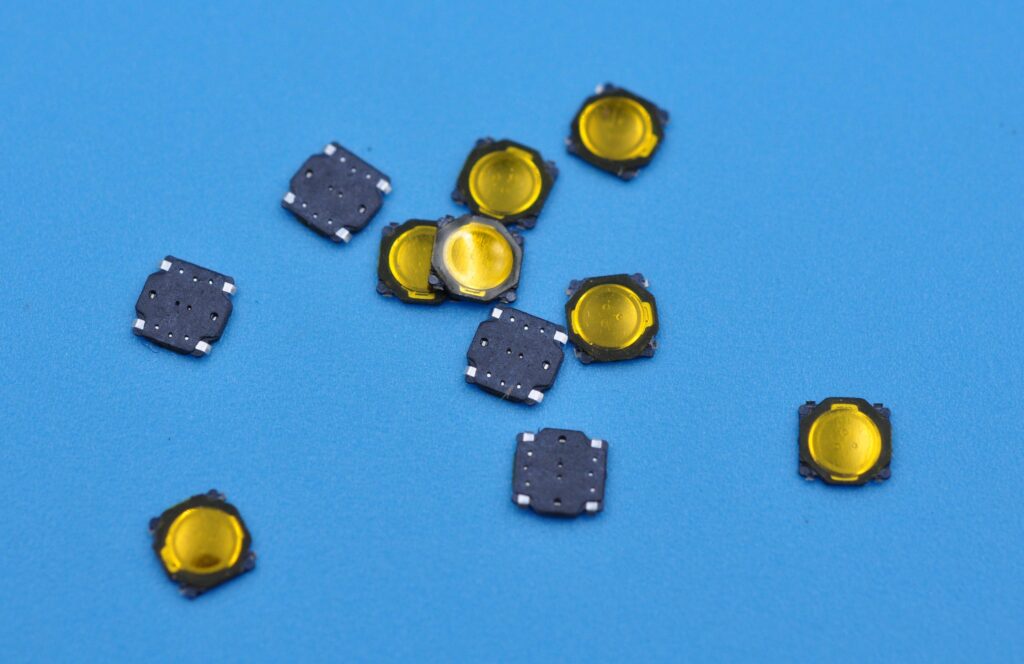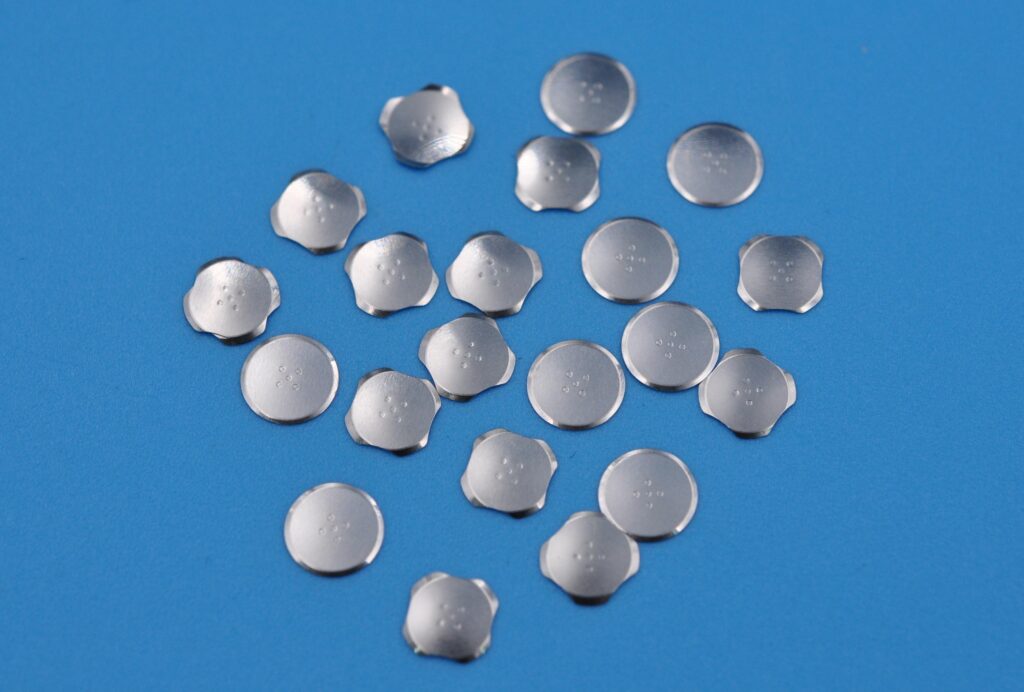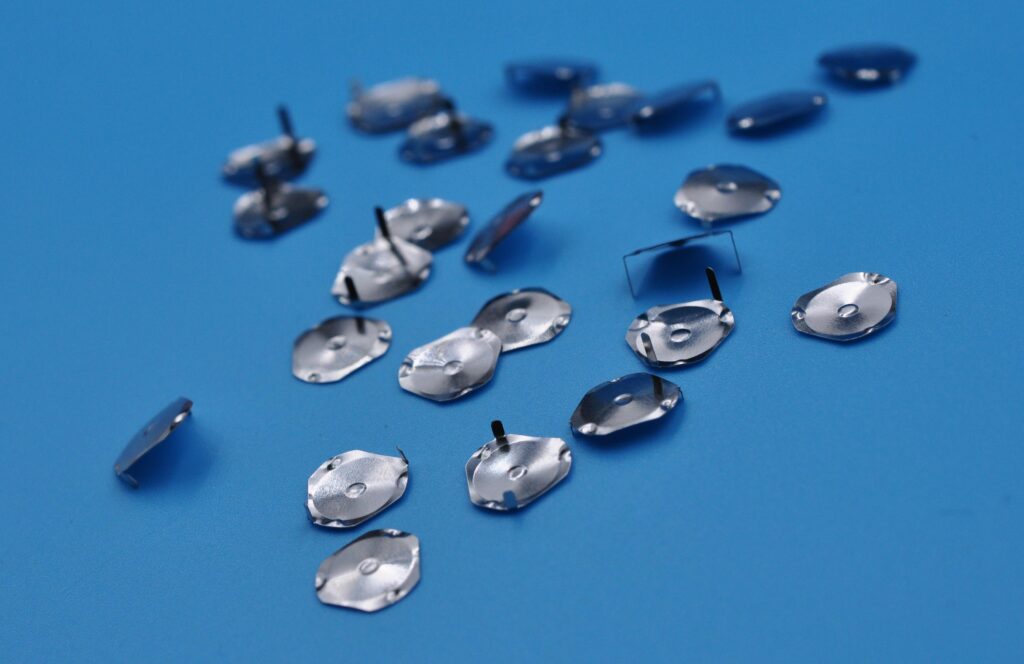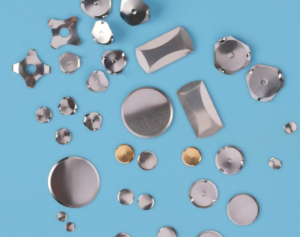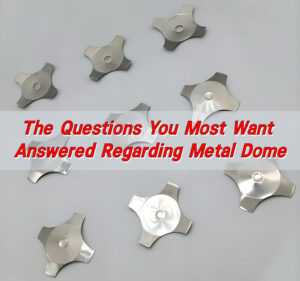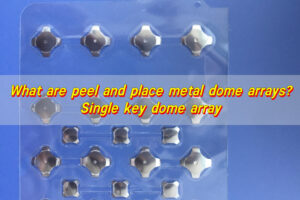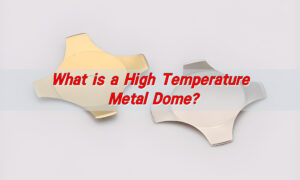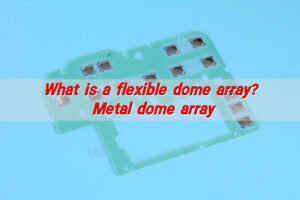Metal dome strength (in grams-force/gf) directly affects tactile feedback and service life – choosing the right strength is the only way to balance the feel and durability. Light touch operations (such as remote controls) are suitable for gentle feedback of 50-150gf, while industrial equipment or high-frequency buttons may require a strong touch of 200-400gf to avoid accidental touches.
What is metal dome strength (gf)?
When we talk about metal dome strength, we refer to the amount of force required to collapse a dome and make electrical contact. That pressure is measured in gram-force (gf)—not grams in weight, but the actual force it takes to trigger the dome.
For example, a 300gf dome takes 300 gram-force to actuate. Press it, and once it hits that 300gf threshold, it collapses, closes the circuit, and offers a tactile “snap.”
This tactile feedback is what gives metal domes their unique feel. It tells the user, “Your input was received.”
The force varies from dome to dome, depending on:
- The dome size
- The material (usually stainless steel)
- Design tolerances
How to choose the right dome strength?
Start by asking the right questions. What kind of device are you designing? What kind of user experience do you want to deliver? Will your users wear gloves? Is speed more important than feedback? Or vice versa?
If the answer is “we want a light touch with quick response,” go for a lower gf dome—maybe around 180gf to 250gf.
If you’re building rugged controls or devices used in outdoor environments, a stronger dome—something around 350gf to 500gf—may be better. That force helps prevent accidental presses, especially in dusty or glove-heavy conditions.
A tactile dome used in a consumer remote might need 220gf. One used in a medical device could benefit from 320gf. The right choice is about context.
Also, think about the surrounding components. The overlay material, spacer thickness, and switch layout all influence how that dome “feels” to the end-user.
What are common gf ranges for domes?
Let’s break down the common force ranges used in metal domes. These ranges cover most tactile applications and are standardized across the industry:
- 100gf – 180gf: Ultra-light feel. These are rare in rugged devices. Best for feather-light applications where sensitivity matters.
- 180gf – 250gf: Light to medium tactile. Ideal for consumer electronics, handheld remotes, and small form-factor keypads.
- 250gf – 350gf: Balanced force. These give satisfying tactile feedback without feeling too heavy. Often used in medical and industrial equipment.
- 350gf – 500gf: Heavy-duty domes. Great for environments with gloves, outdoor exposure, or where preventing mis-press is key.
Choose a gf that matches not only your mechanical design but also your user psychology. How the switch feels matters just as much as how it performs.
What gf is best for snap dome switches?
Snap dome switches thrive when the dome force matches the user’s needs. That “snap” feeling is a critical part of the user interface. Choose the wrong force, and it may feel sluggish or stiff.
A good rule of thumb:
- 200gf – 280gf for electronics and handhelds
- 300gf – 380gf for industrial, automotive, or medical applications
- 400gf and above for heavy-duty buttons or specialized applications
Take, for example, the SG08450N model. It offers around 450gf—perfect for rugged or outdoor use where mis-press prevention is critical. On the other end, the RCG05200N dome provides 200gf, delivering fast activation with a soft tactile bump.
Which dome force fits your device?
Device usage plays a huge role in dome selection. Here’s a quick breakdown by device type:
- Remote Controls: 180gf to 250gf. Fast response. Light touch.
- Wearable Electronics: 150gf to 220gf. Slim profile. Minimal force.
- Medical Devices: 250gf to 350gf. Clear tactile feel. Reliable actuation.
- Automotive Interfaces: 300gf to 450gf. Rugged, glove-friendly.
- Outdoor Equipment: 400gf to 500gf. Strong force. Less false triggering.
If the device is used daily and needs to feel “crisp,” lean toward 250gf–300gf. If it’s mission-critical and must resist moisture, dust, or false presses, go stronger.
Does dome strength affect tactile feel?
Absolutely. Dome strength defines tactile response.
Light domes offer gentle feedback. Press them, and they activate quickly with a soft click. They’re responsive and ideal for fast, repetitive use. But if the force is too low, users might not feel the feedback, leading to accidental presses or uncertainty.
Heavy domes provide a strong, definitive snap. There’s no doubt when the switch actuates. This enhances confidence in mission-critical applications, but it also requires more effort. That effort adds safety and precision but may slow down repetitive operations.
Also, consider travel distance. Most domes travel around 0.3mm to 1mm, but stronger domes usually have slightly longer and more forceful snaps.
In short:
Low gf = fast, gentle, efficient
High gf = solid, reliable, deliberate
How does strength impact dome performance?
Strength isn’t just about feel. It also affects durability, fatigue resistance, and actuation lifecycle.
Here’s how:
Lower gf domes generally offer higher actuation counts (often 1–5 million presses) due to less material stress.
Higher gf domes, while more durable in tough environments, may fatigue faster if misused or pressed too often in low-stress environments.
Also, stronger domes resist deformation. They’re ideal for products that face pressure from the top cover or overlay.
Domes with correct gf also maintain better contact consistency. That reduces bounce and ensures solid signal transmission. If the dome is too soft, you risk signal jitter or incomplete contact.
A few popular domes from Best Technology include:
- SG08450N: 450gf, robust, ideal for industrial or glove-friendly controls.
- SG06280N: 280gf, highly balanced, smooth feedback.
- BL12340: 340gf, great snap feel with extra tactile precision.
- RCG05200N: 200gf, fast activation for responsive, compact devices.
Each dome is engineered to deliver a specific experience. Picking the right one means matching force, shape, and tactile feedback to your product’s soul.
Conclusion:
Choosing the right metal dome strength (gf) is all about finding the balance between feel and function. Lighter domes offer fast, smooth clicks, while higher gf domes provide strong, deliberate feedback.
If you’re not sure which dome suits your project, we’re happy to help. Contact us at sales@metal-domes.com


